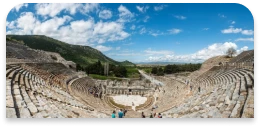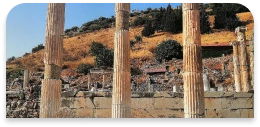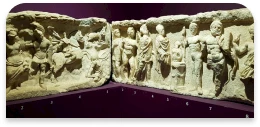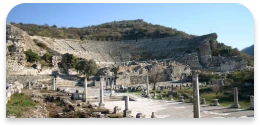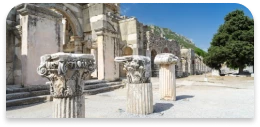Ephesus Theatre
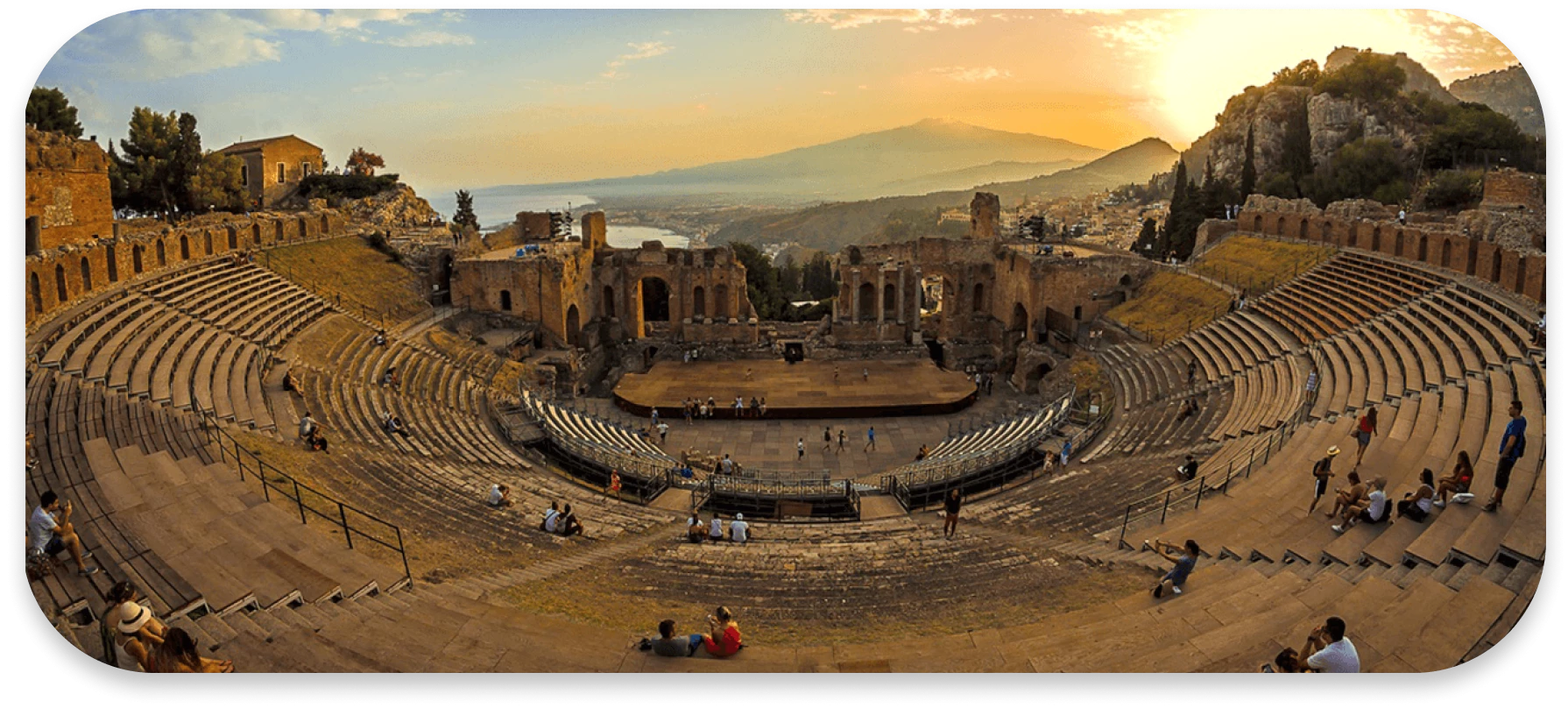
Of all the archaeological remains from Antiquity, the Ephesus theatre is the most magnificent structure in Ephesus' ancient city.
Where is Ephesus Theatre located?
The Ephesus Great Theatre is located on the slope of Panayir (Pion) Hill, opposite Harbor Street, and is easily seen when entering from the south entrance to Ephesus. The theatre is cut into the west slope of Mount Pion upon which the Acropolis was located. Hellenistic theatres are generally built on a natural slope of a hill in order to benefit from the gradient of the hill. The best example is the Acropolis Theatre of Pergamum which was constructed in the 3rd century BC, almost at the same time with the Ephesus Theatre. The excavations of the Great Theatre reveal that it was first constructed about 250 B.C, during the reign of Lysimachos. During the Roman period, it was enlarged and formed its current style that is seen today.
Ephesus was laid upon a grid system such as any other Hellenistic ancient city. According to this layout, major public buildings are located along the principal streets. One of the major streets of Ephesus, Arcadian runs between where the Harbor and the Great Theatre.

Transformation into a Roman Theatre
Hellenistic Theatre of Ephesus had a cavea (seating section), an orchestra, and s simple one-story stage building. Romans made some alterations in the theatre beginning about 40 AD. The theatre was expanded andand renovated to become the massive structure what we see today. It was enlarged to seat 25.000 people around 44 A.D., by moving the frontproskenion wall forward and by vaulting the entrances.These modifications gave the theatre a more enclosed form. In about 140-144 A.D. the orchestra was enlarged by removing the front rows of seats. In the third century A.D., a third-story parapet was added to the scaenaefrons.
Archaeological Features of Ephesus Theatre
- It is the largest in Anatolia and has a capacity of 25,000 seats. The cavea has sixty-six rows of seats, divided by two diazoma (walkway between seats) into three horizontal sections. There are three sections of seats.
- The audience entered from the upper cavea.
- The stage building is three-storied and 18 meters high. The facade facing the audience was ornamented with relieves, columns with niches, windows, and statues. There are five doors opening to the orchestra area, the middle one of which is wider than the rest. This enhanced the appearance of the stage, giving it a bigger, monumental look.

The Riot in Ephesus
The devotion of Ephesians to goddess Artemis is well-known to Christians from the Acts of the Apostles, chapter nineteen, which describes an assembly in the Great Theatre of Ephesus. According to Acts 19, a silversmith named Demetrius, who made shrines for the goddess, instigated the cratsmen against Paul as he was in fear of losing his income from selling Artemis idols.
''You know, my friends, that we receive a good income from this business. And you see and hear how this fellow Paul has convinced and led astray large numbers of people here in Ephesus and in practically the whole province of Asia. He says that gods made by human hands are no gods at all. “
The crowd gathered around Demetrius was furious and soon the whole city was in an uproar. They seized Gaius and Aristarchus, Paul’s traveling companions from Macedonia, and all of them rushed into the theater together. Believers wouldn’t let Paul appear before the mob. Government officials, who were Paul’s friends, urged Paul not to enter the theater (Ac 19:31); the city clerk defended Paul and his companions (Ac 19:35-37).


